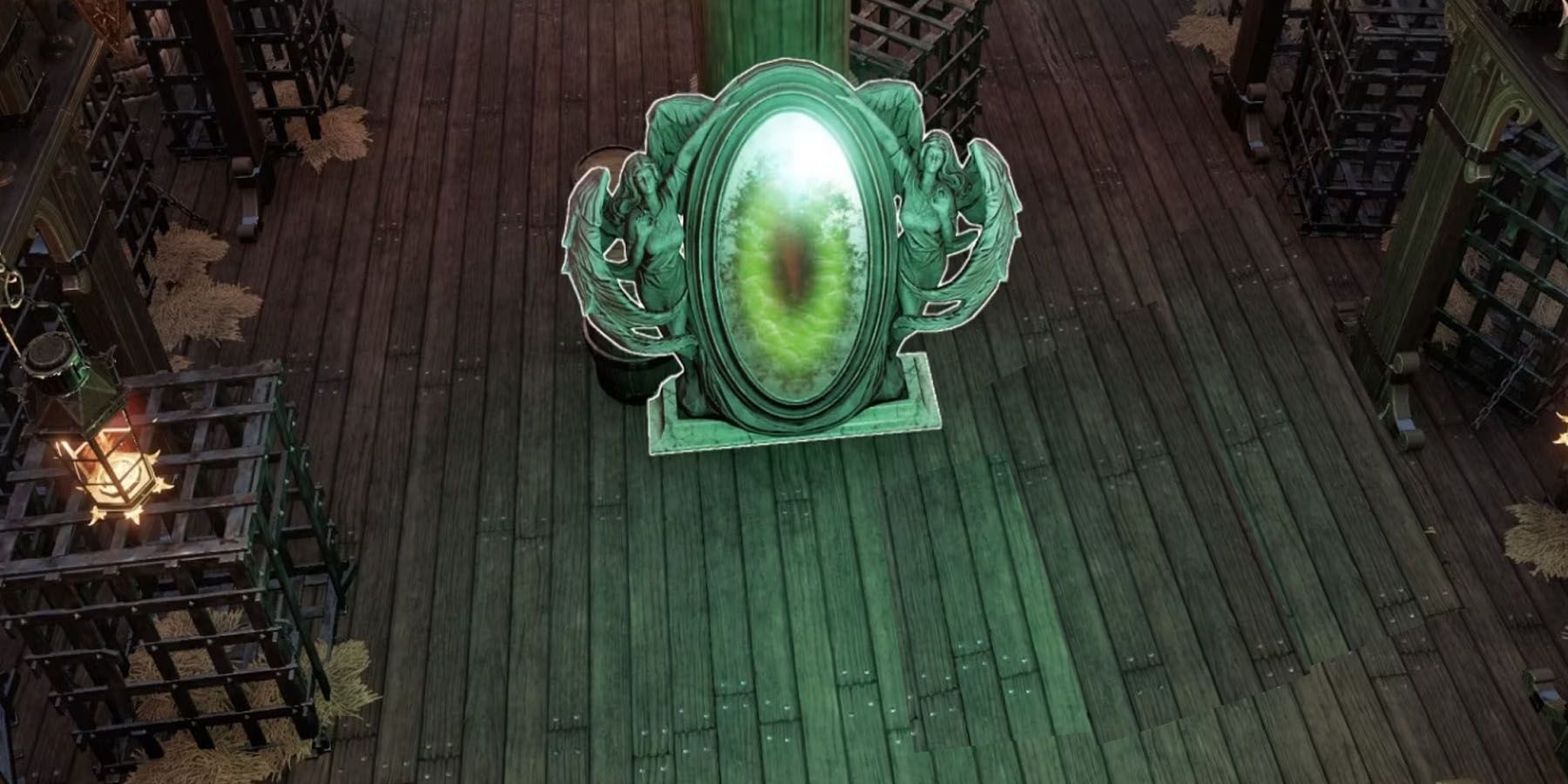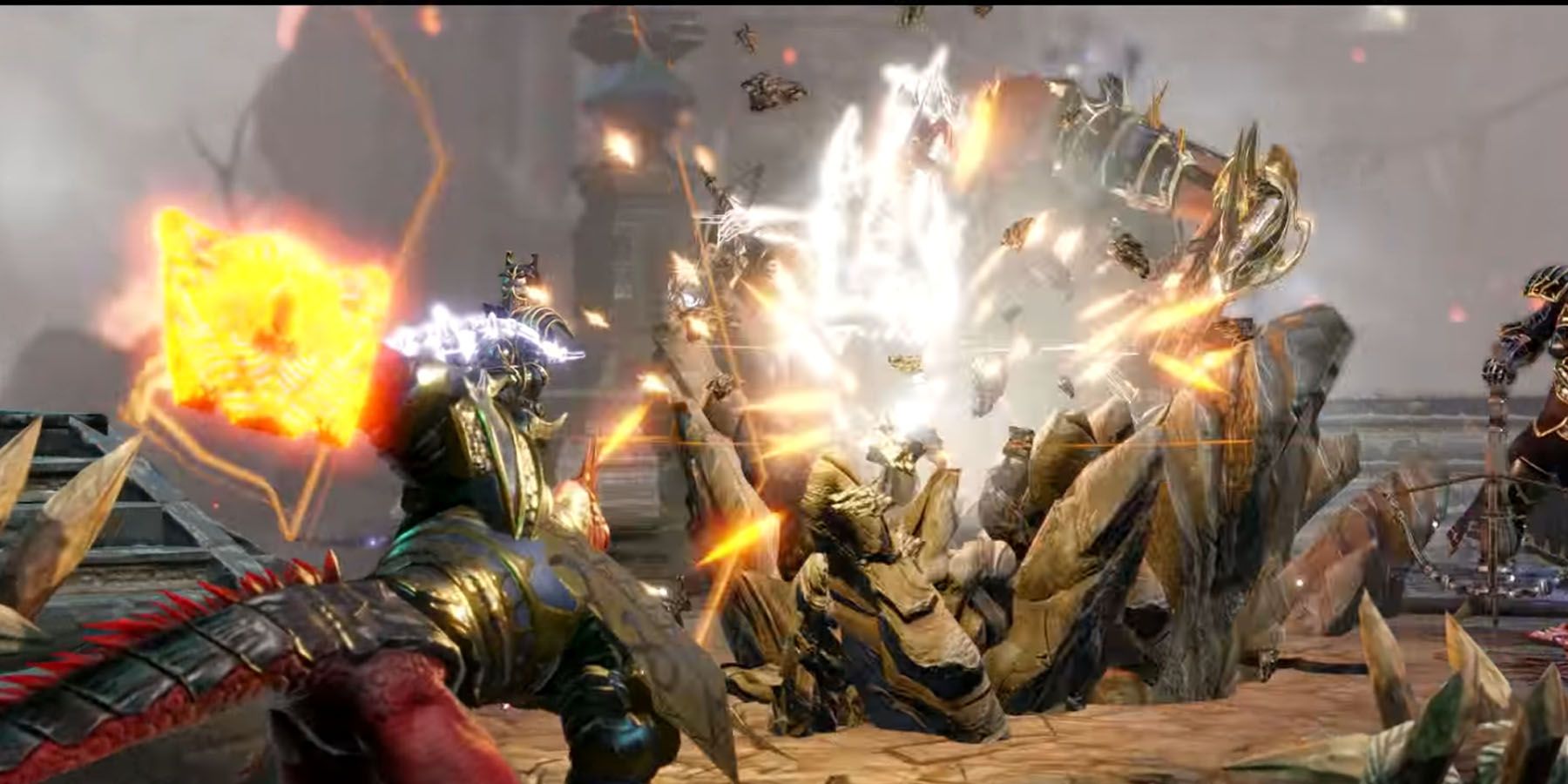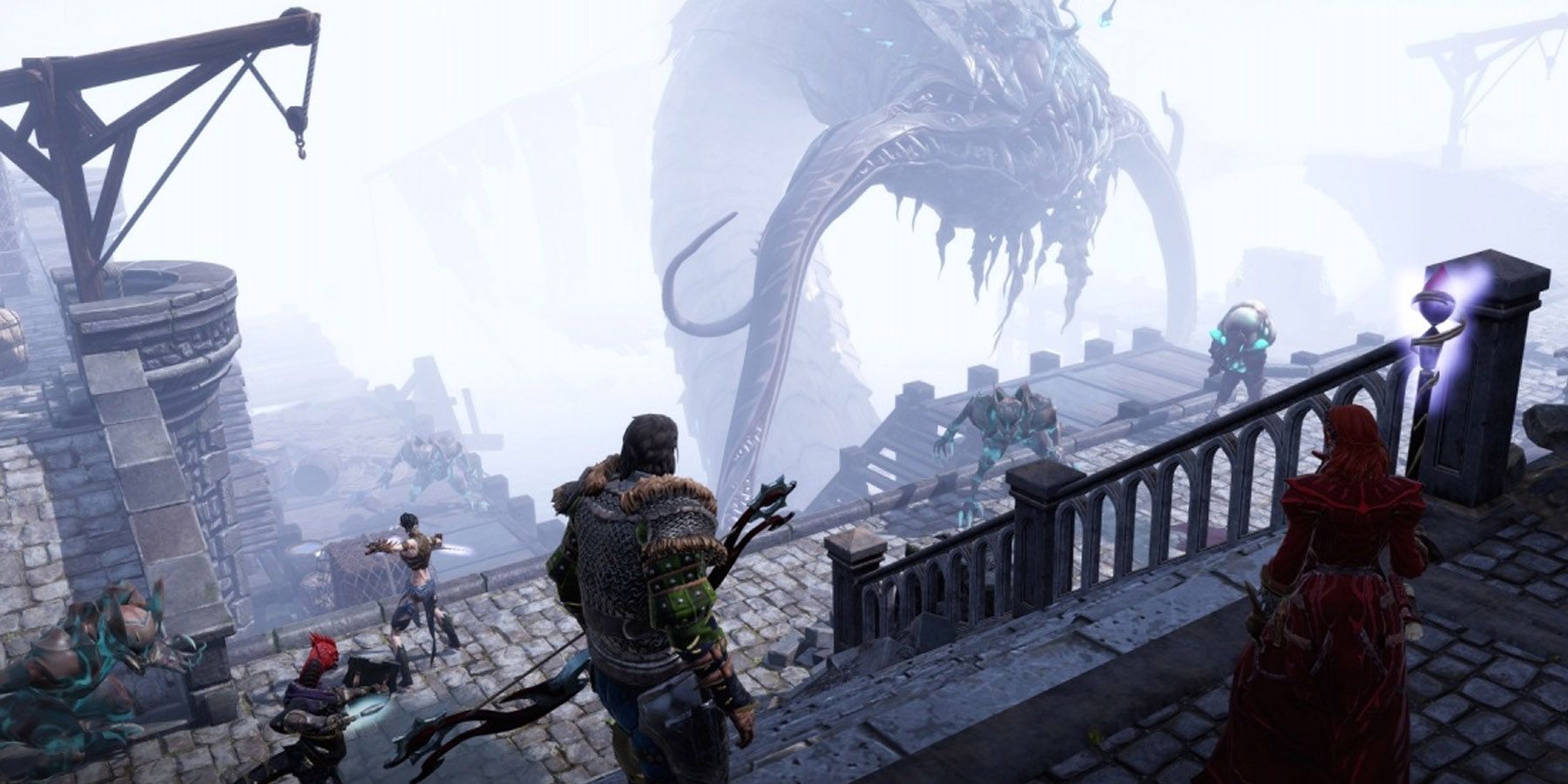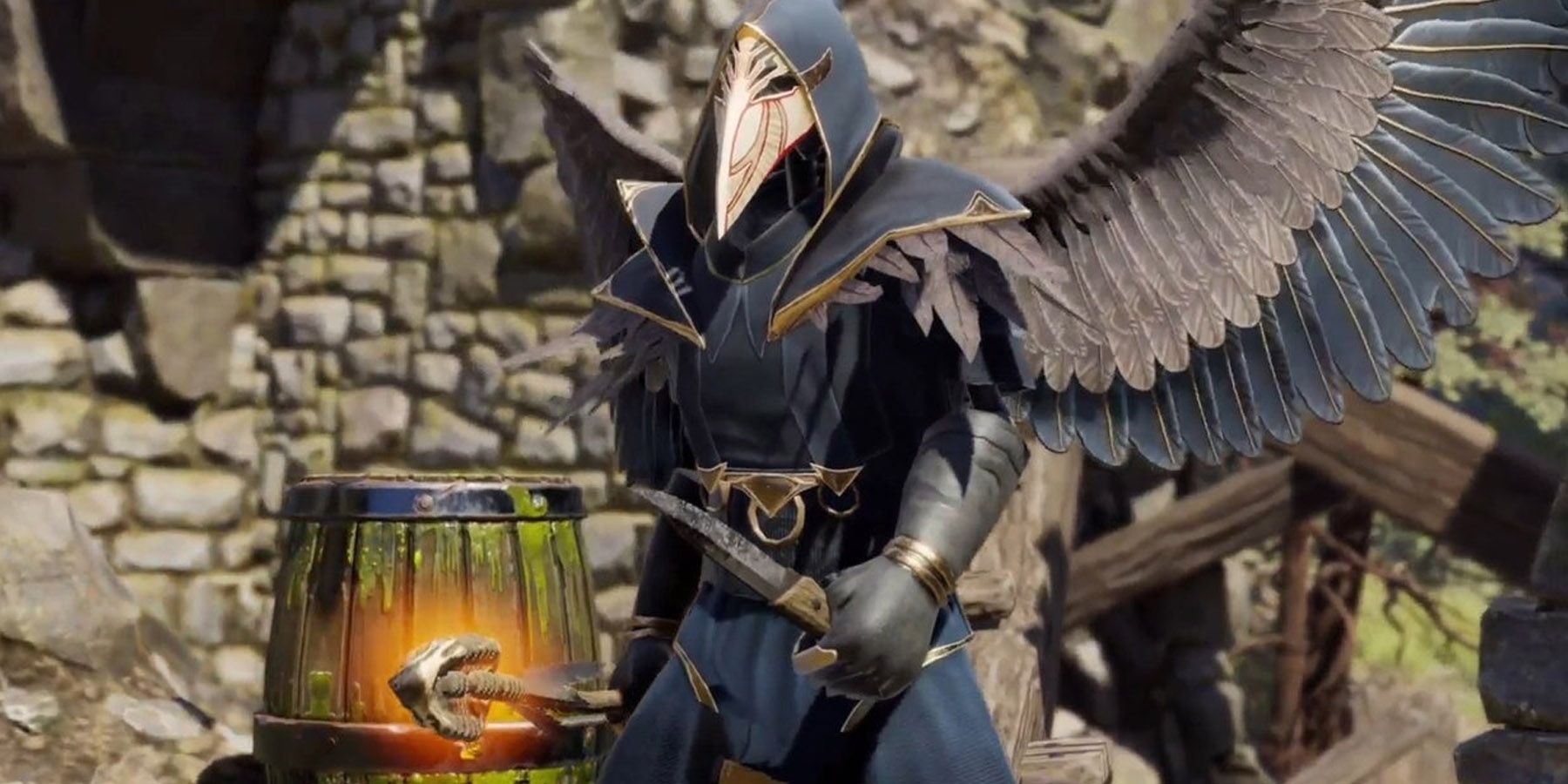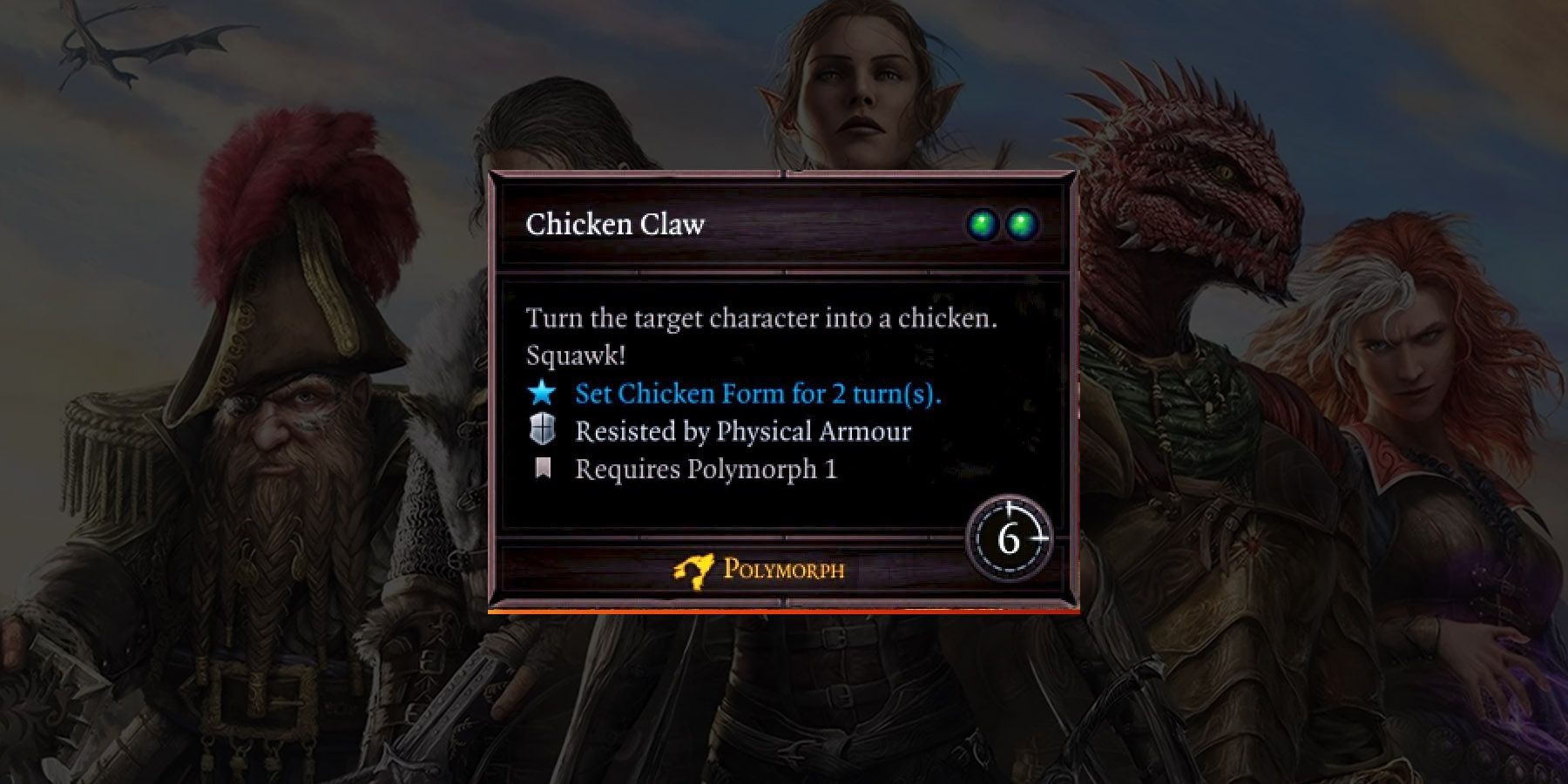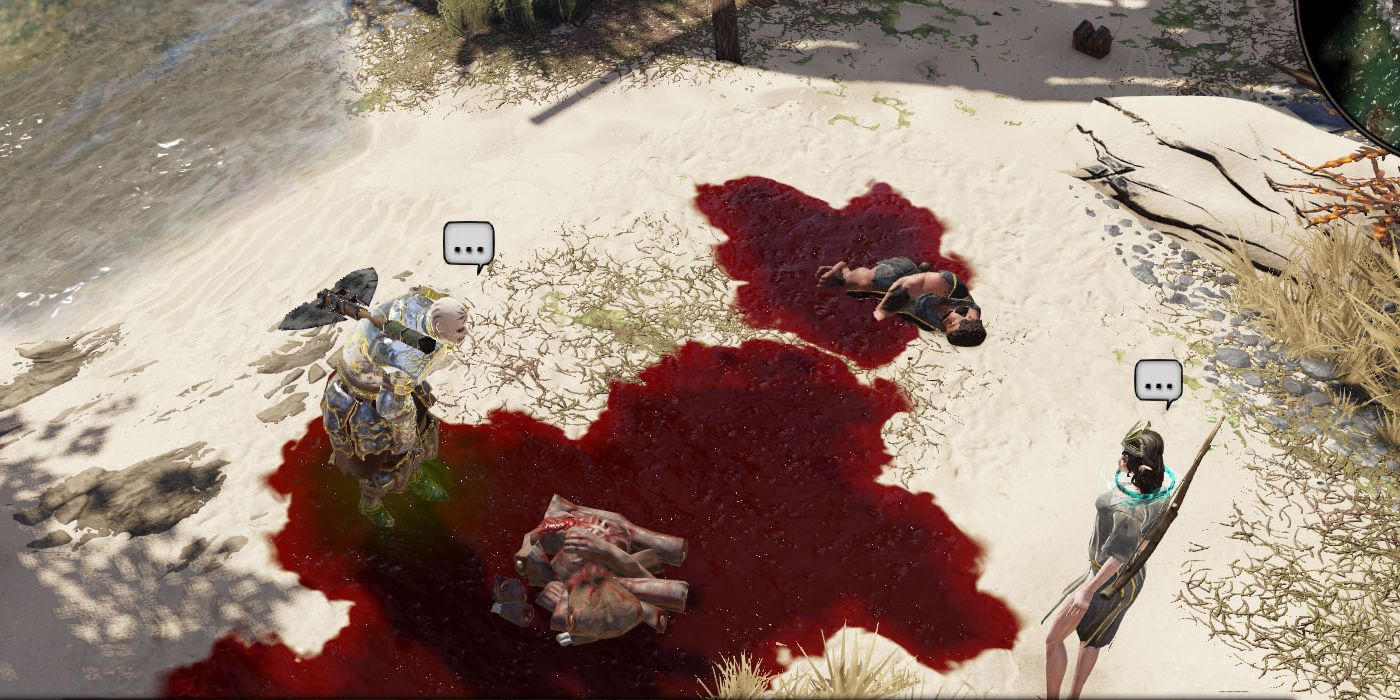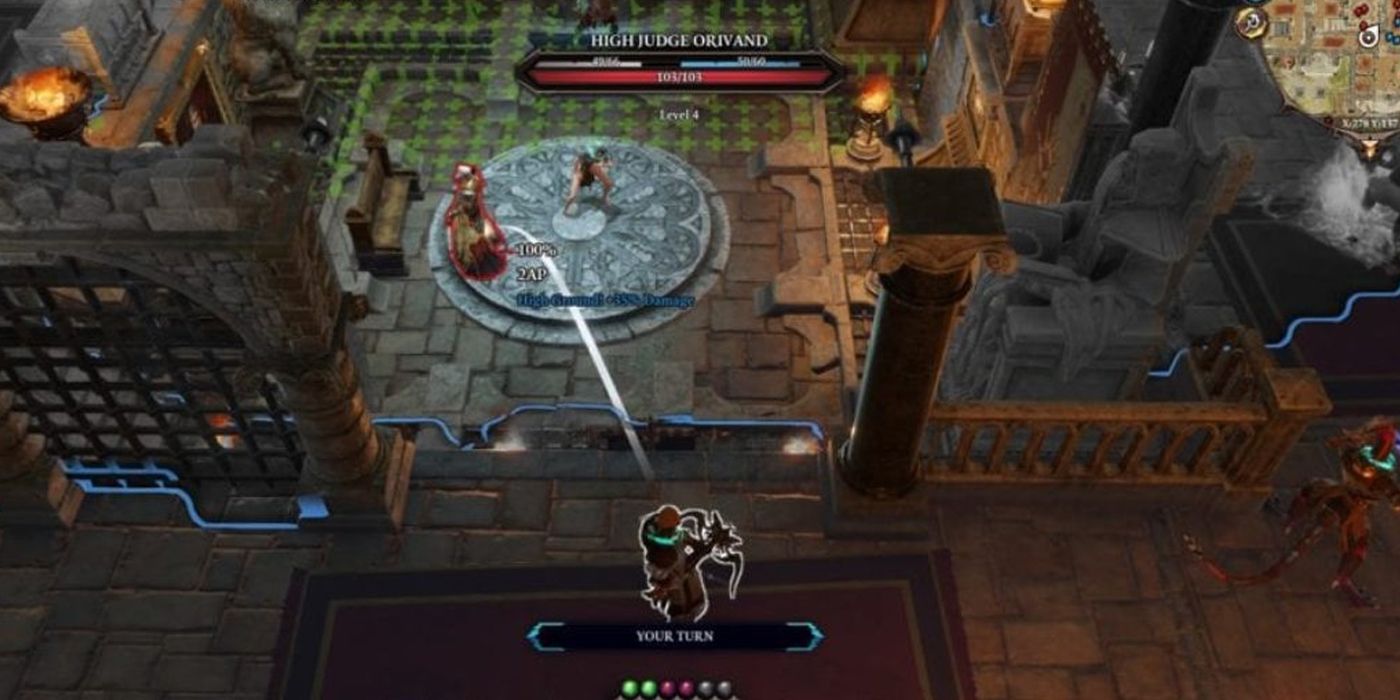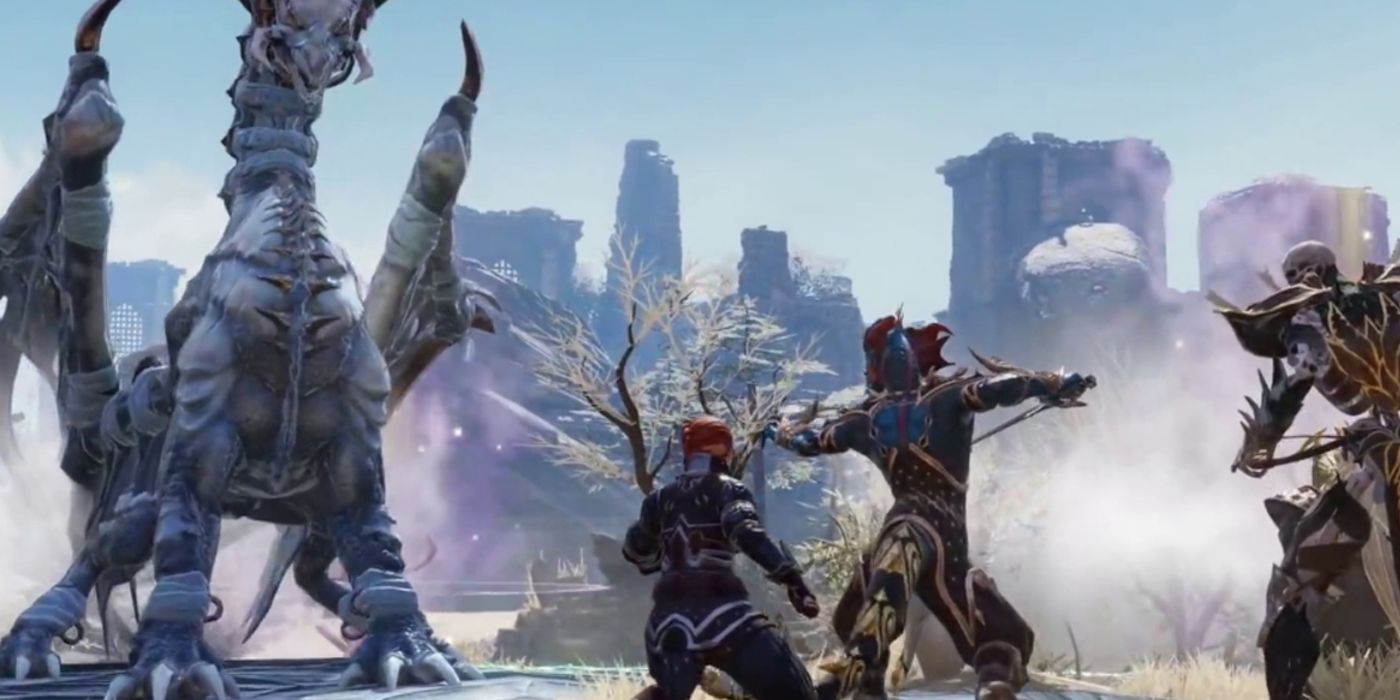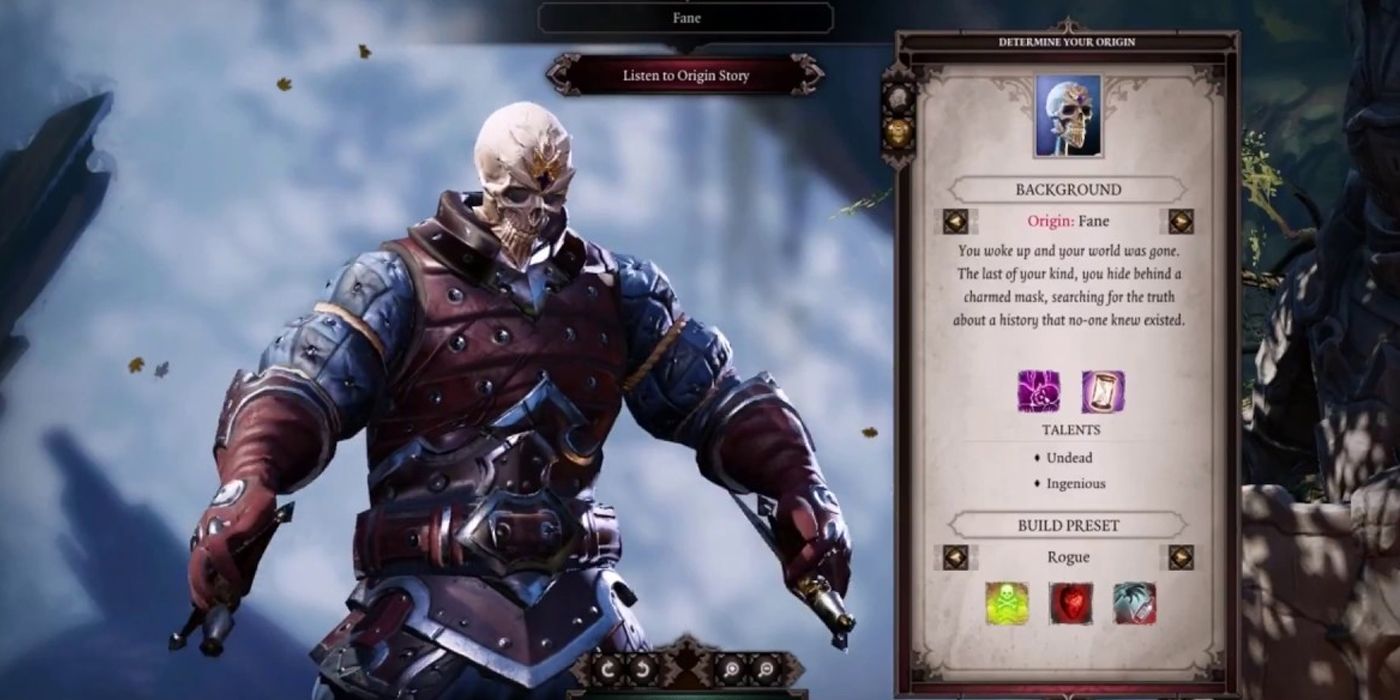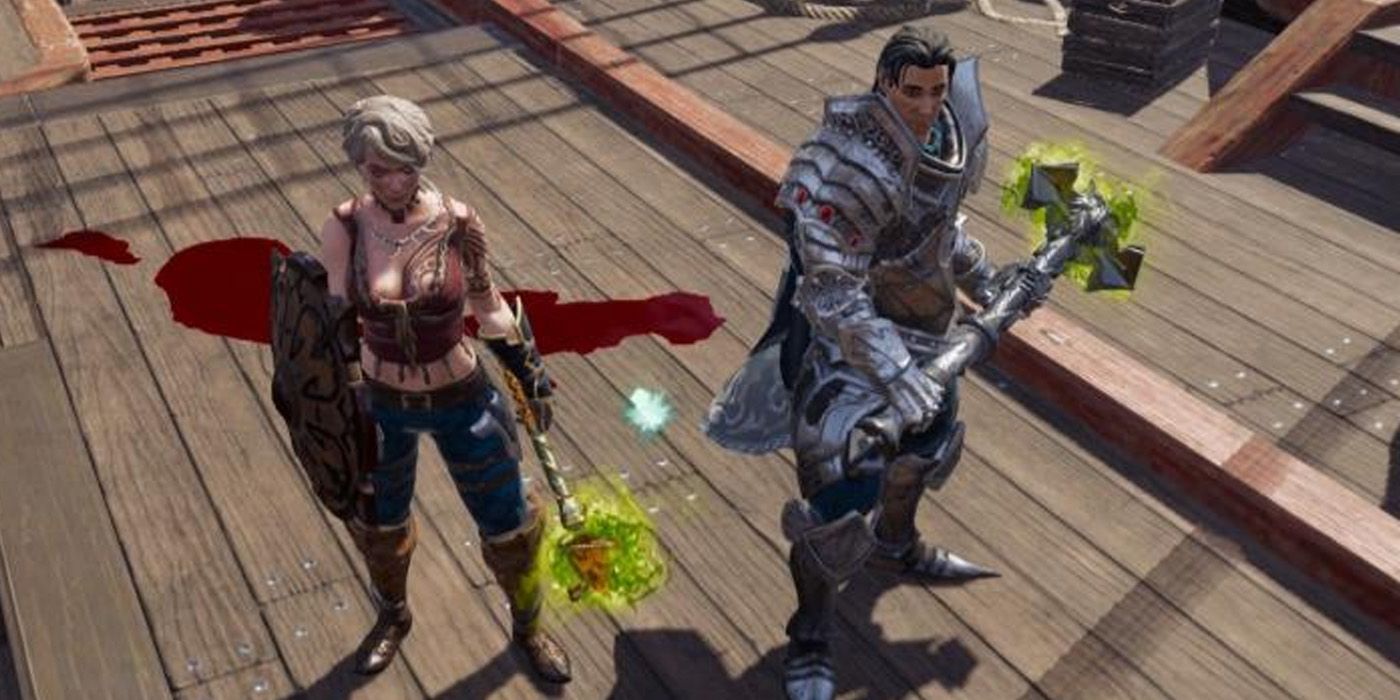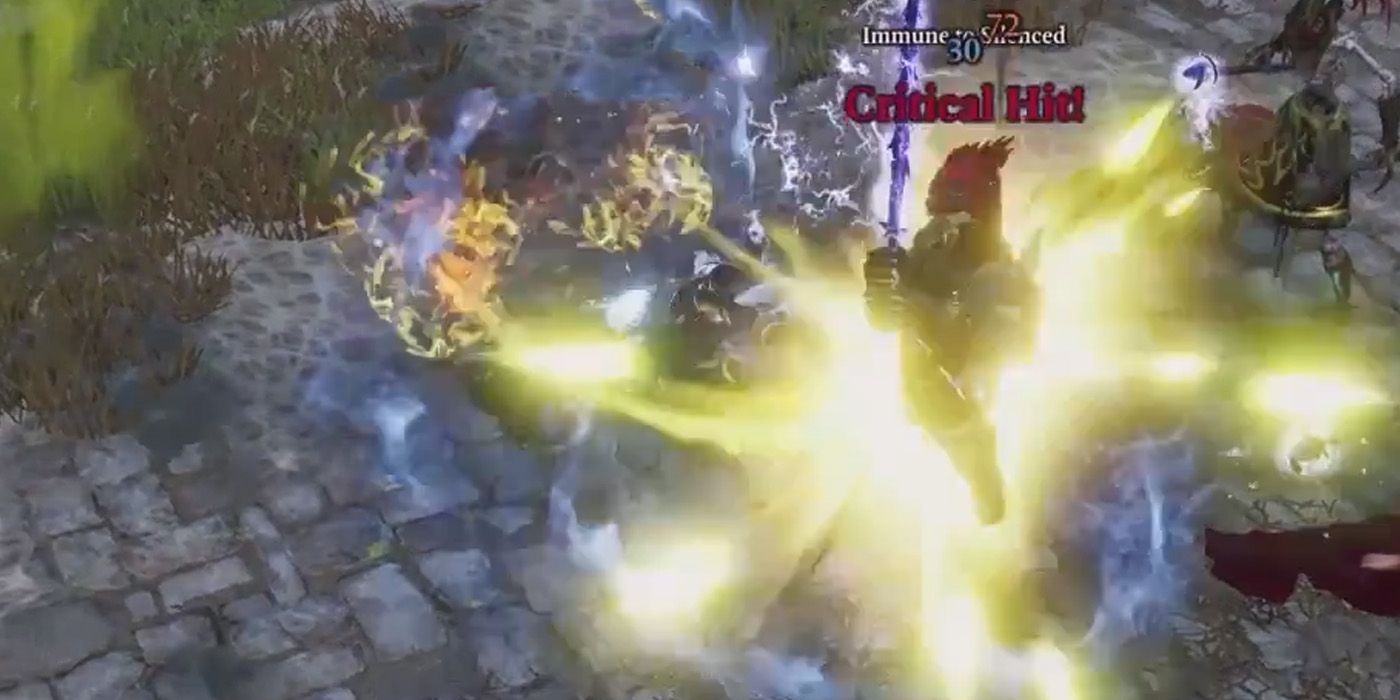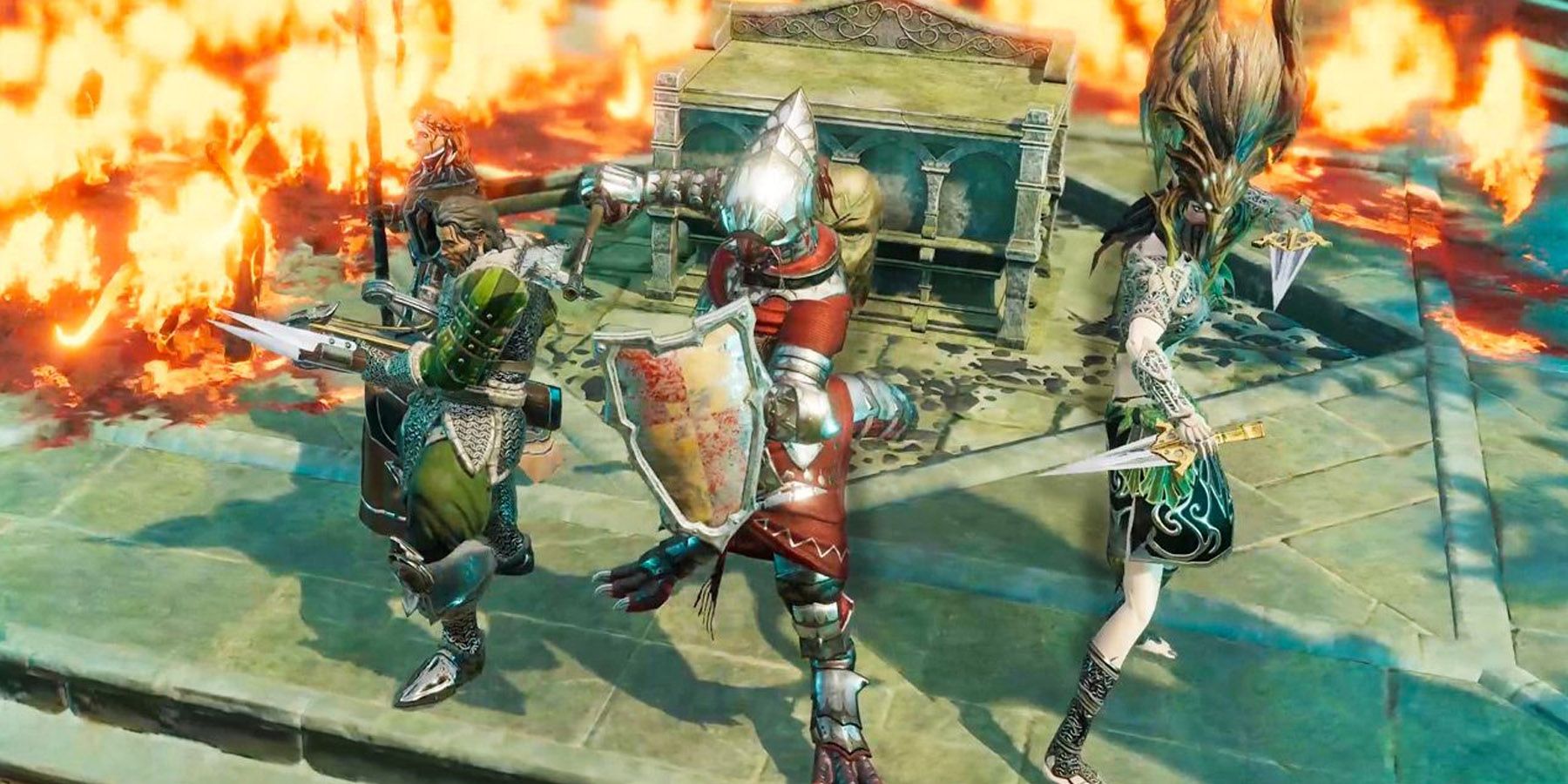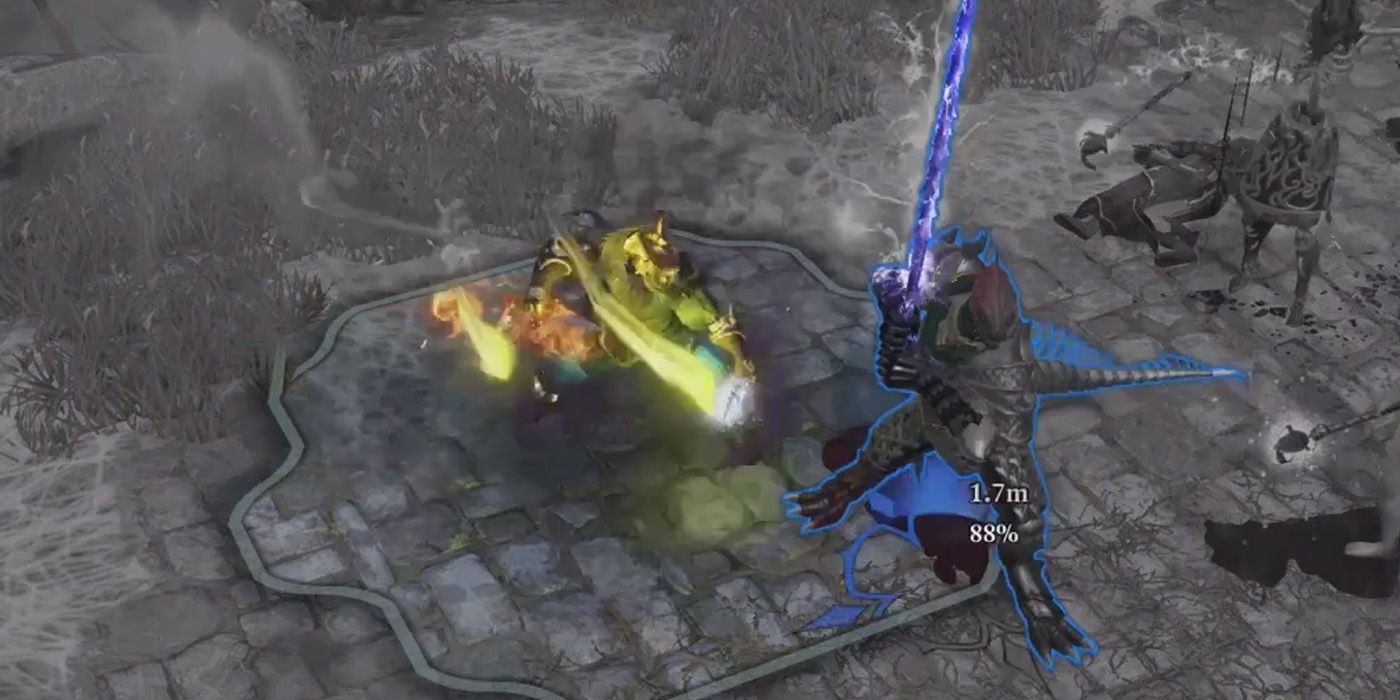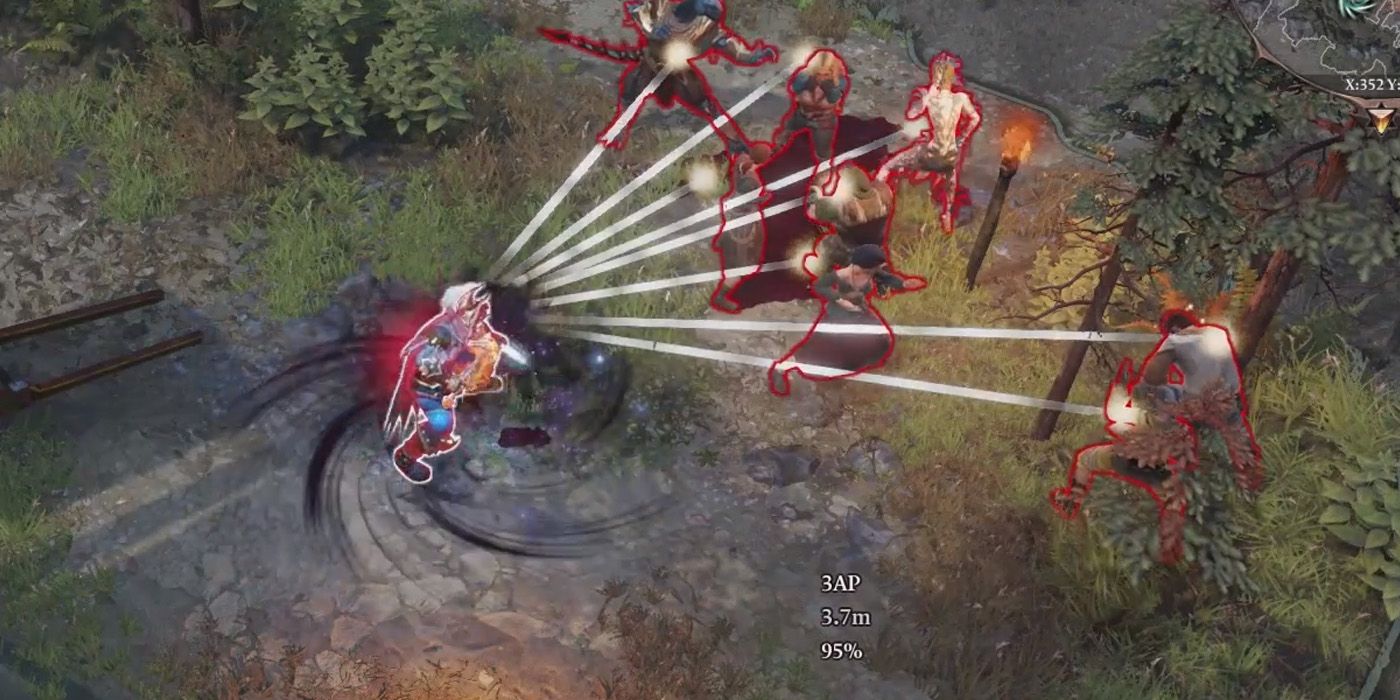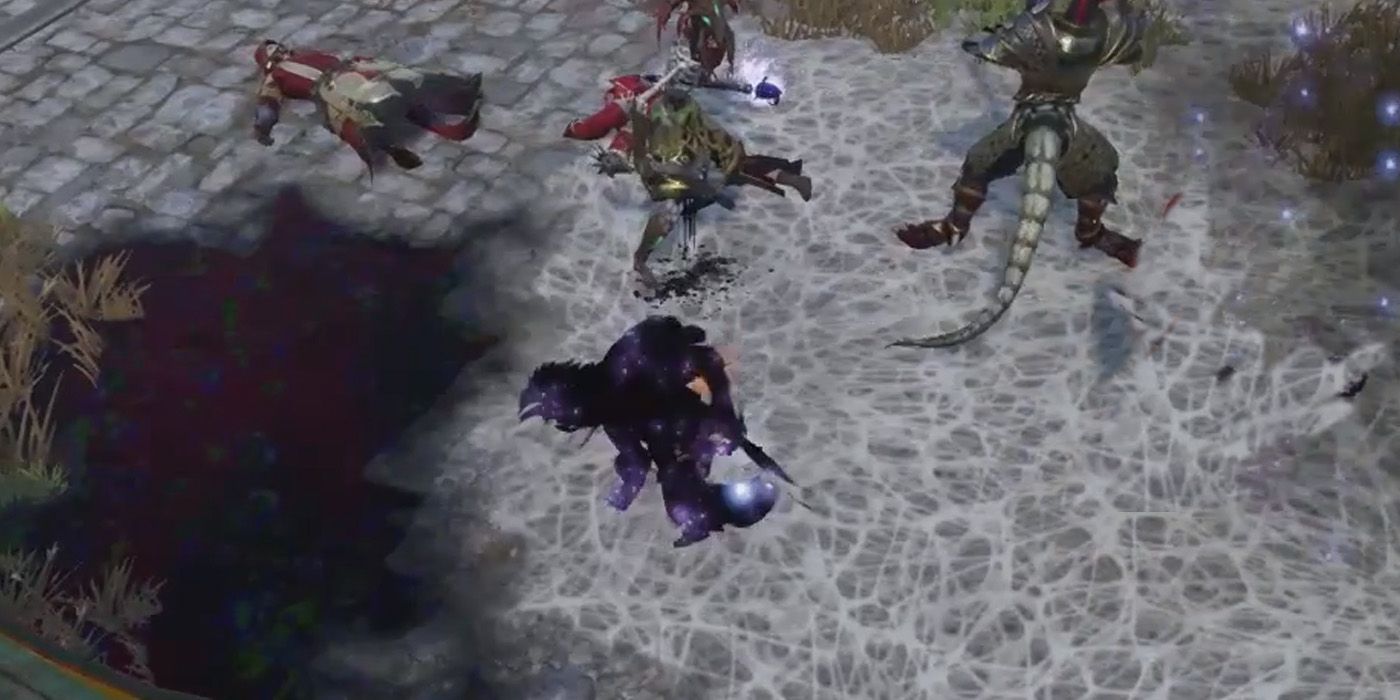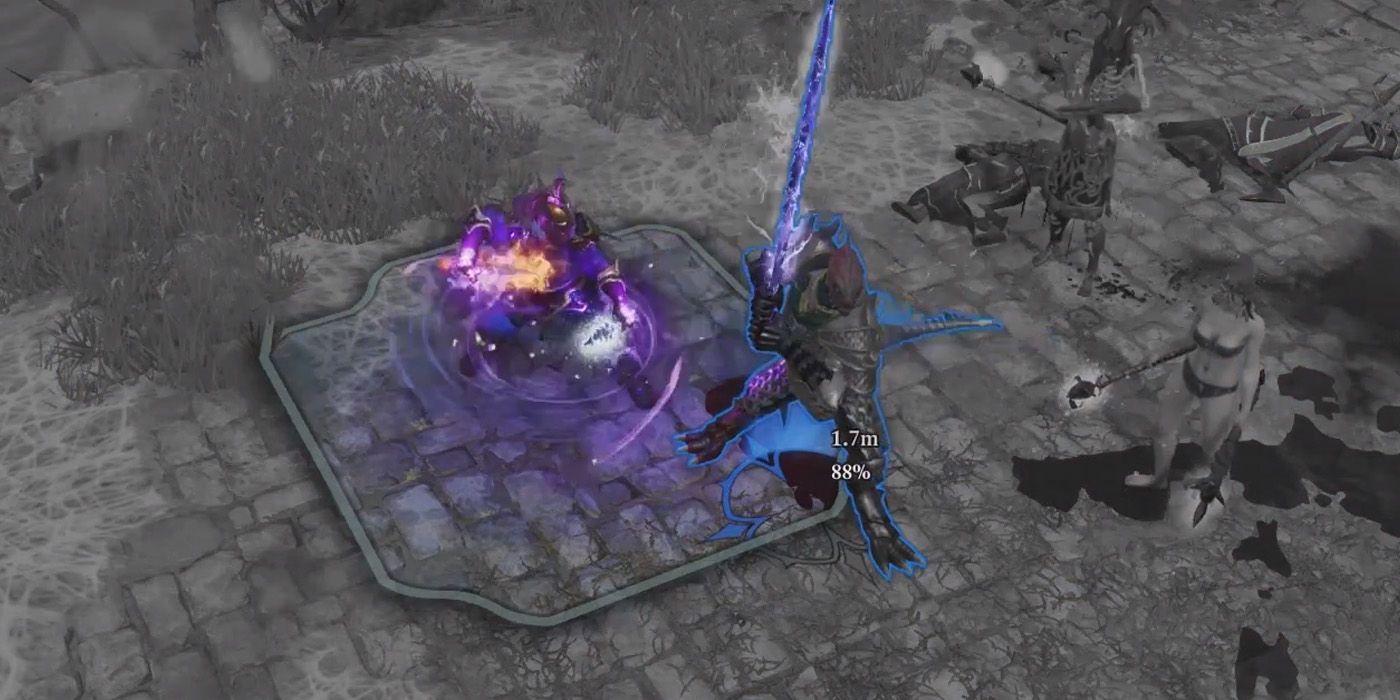Fans of Larian Studios know just how flexible characters can become in Divinity: Original Sin 2. Moreover, the right progression and Skills combination can turn any character into a devastating DPS powerhouse. For technical players, Original Sin 2 offers a lot of means to "break" the script and score insane damage. In short, Divinity: Original Sin 2 has the tools for the perfect Rogue.
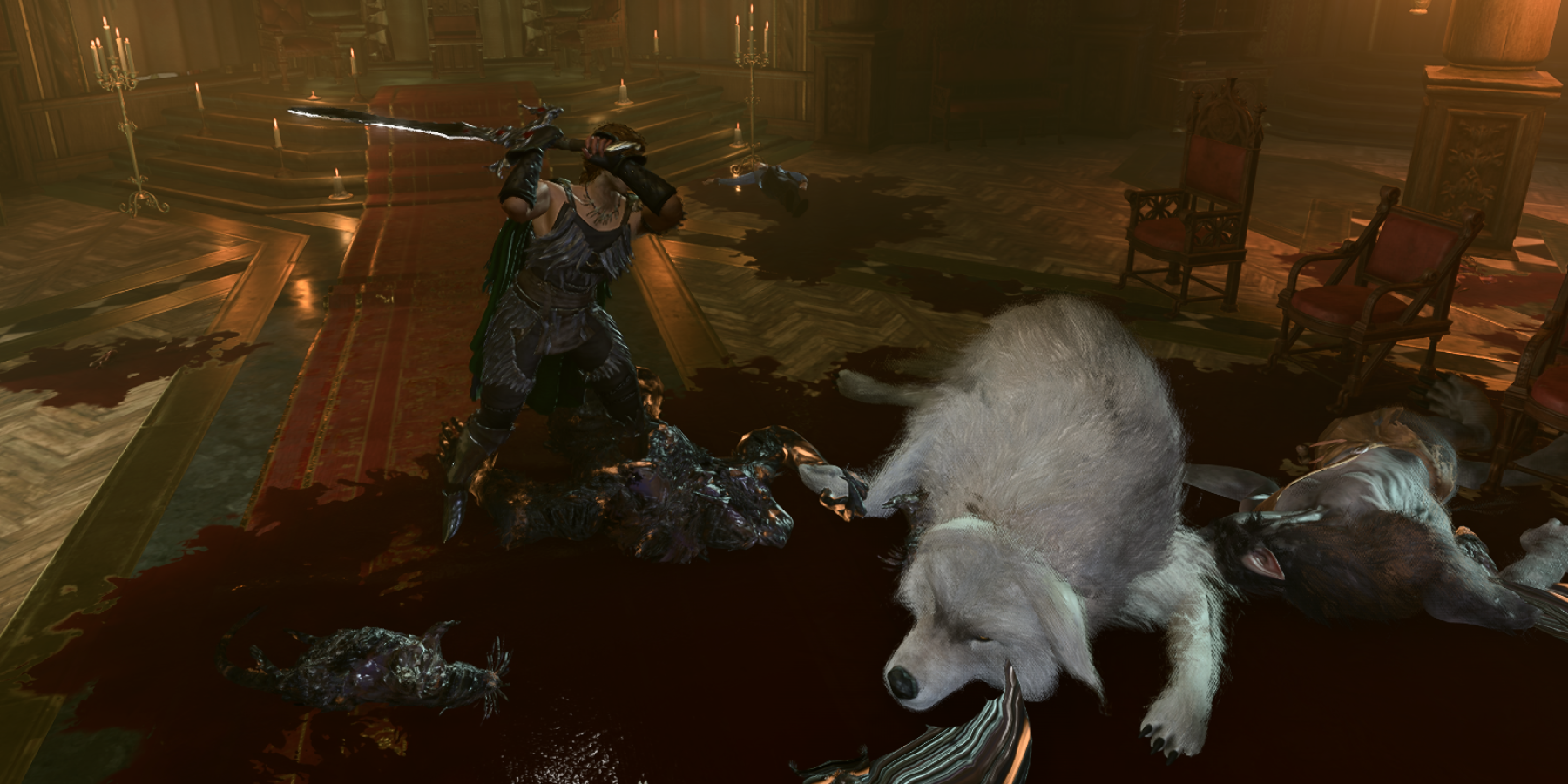
Baldur's Gate 3: Best Fighter Multiclass Build
The Fighter is one of the strongest late-game classes in Baldur's Gate 3, but that doesn't mean it can't benefit from a multiclass combo.As with any RPG, a Rogue offers a ton of flexibility to tinker with Original Sin 2's core mechanics. Additionally, the right Rogue build can end combat encounters before they even fully begin. However, how can players tap into a Rogue's full potential in Larian Studios' Original Sin 2?
Updated on January 31, 2024, by Rhenn Taguiam: Despite the popularity of Baldur’s Gate 3 as Larian Studios proving the viability of a modern and accurate D&D 5e adaptation, fans of the acclaimed RPG may want to consider playing Divinity: Original Sin 2, especially when comparing game mechanics. This is especially the case with both BG3 and Original Sin 2 relying heavily on stealth plays for their Rogues but still having wildly different playstyles. From the perspective of Original Sin 2’s Rogue, a powerhouse stealthy character may be created by checking out effective Skills, re-entry strategies, and party compositions.
23 Try Now, Magic Mirror Later
Create, Experiment With Builds Via Magic Mirror
|
Procedure |
Use the Magic Mirror whenever players want to rehash their Skill or Stat distribution |
|---|---|
|
Effect |
Respeccing via the Magic Mirror allows players to experiment with builds safely without having to restart their whole progress |
Thanks to the Magic Mirror in Divinity: Original Sin 2 gameplay, players don’t necessarily have to get nervous about creating the wrong builds. Just activating the Mirror allows them not just to change the appearance of their Rogue, but to also respec them to their heart’s content.
Theoretically, this feature does ensure that players can continuously experiment and adjust their Rogue builds whenever certain setups don’t work in their favor. Likewise, players get more freedom cheesing builds and figuring out which setups produce the most firepower, especially when building stealth-reliant builds. Working with the knowledge that the Magic Mirror can reset stats can help players build the perfect Rogue without hesitation.
22 Exit Combat In Case Of Emergencies
Get Mobility Skills To Ensure Methods Of Escaping Combat
|
Procedure |
Always have a movement Skill prepared, such as Cloak and Dagger (Scoundrel 2), Tactical Retreat (Marksman 2), or even Spread Your Wings (Polymorph 2) |
|---|---|
|
Effect |
Having a mobility Skill prepared all the time allows Rogues to exit combat quickly in emergencies, allowing players to reassert control over combat once the Rogue re-enters via an attack |
While it’s true that the Rogue’s mastery of mobility allows them to enter combat whenever they want, players who want to make strong Rogue builds should also consider their exit plans. The Rogue they will create is likely much more vulnerable compared to the team’s tank and frontline fighter, which in itself is an unfortunate circumstance considering how close they have to get to enemies to proc Sneak Attacks, just like the Rogue in Baldur’s Gate 3.
In turn, it’s practical for Rogues to also consider how they want to exit battlefields in case of emergencies. Leaping-based Skills or even teleporting spells should always be available at the Rogue’s disposal for worst-case exits, especially since this allows them to go back to town to resupply or even reposition themselves to get the upper hand.
21 The Environment Is The Best Friend
Consider Setting Up The Environment For Combos
|
Procedure |
Use other Skills to set up the environment for combos, especially those that create surfaces |
|---|---|
|
Effect |
Players can build more damage once their Rogues use other Skills on those surfaces and damage types, such as Fossil Strike (Geomancer) to create oil for Pyrokinetic Skills to combust, or a Poison Dart (Geomancer) that can Poison foes or coat a weapon in Poison |
While it’s true that the Rogue’s penchant for stealth means their Divinity: Original Sin 2 build is tied to surprise attacks, this shouldn’t be their only source of DPS. Players who want to make the most out of their Rogues should consider how the environment plays into the picture of their builds. For instance, Rogues could always keep a Pyrokinetic Skill handy to ensure they can trigger barrels from another part of the map.
Likewise, Rogues should always consider other elemental triggers that could benefit their attacks. Common triggers include lightning spells from the Aerotheurge School, or even the occasional oil from Geomancer for Pyrokinetic setups. This way, Rogues have Skills other than their Backstabs that can dish heavy damage.
20 The Right Skills Secure Early-Game Domination
Combine Skills From Different Schools To Achieve Different Effects
|
Procedure |
Combining Skills from other Schools, such as Poison Darts (Geomancer) or even Elemental Arrowheads (Marksman) |
|---|---|
|
Effect |
The right Skill combos can help Rogues perform better in combat. For instance, Rogues can set up high-damage attacks if they Poison enemies via Poison Darts or boost damage from afar with Elemental Arrowheads |
When players create a Rogue for the first time or for the first few hours of the game, it’s crucial to secure their character’s survival through the right selection of Skills. While players may already have the Rogue or Shadowblade Class templates as basis of their Rogue build’s preliminary Skills, understanding which Skills are must-haves to accommodate the Rogue’s limited Memory can transform them into an early-game powerhouse.

Baldur's Gate 3: 12 Great Weapon Mods
There are countless weapons available for players to use in Baldur's Gate 3, but those who want more should consider using these mods.For instance, Backlash and Throwing Knife under Scoundrel are powerful for multi-range Backstabs, but Adrenaline is more practical to secure more AP for extra actions. Outside the Scoundrel School, players may be surprised to learn that Poison Darts (Geomancer) for extra damage, Nether Swap (Aerotheurge) for repositioning with enemies, and even Elemental Arrowheads (Marksman) for adaptability could expand the Rogue’s arsenal.
19 Teamwork Makes The Dream Work
Coordinate Skill Combos With Other Characters
|
Procedure |
Consider how the Rogue’s toolkit can work with other members of the party, especially when engaging in combat |
|---|---|
|
Effect |
A Rogue can maximize their combat performance if their attacks are executed properly. For instance, a tank can grab focus from enemies so Rogues can backstab a powerful enemy, leaving them ripe for the taking against the team’s long-ranged specialists |
Despite the efficiency of a Rogue-type character in Divinity: Original Sin 2 combat, their tendency to be just as squishy as spellcasters makes it impractical to have them go toe-to-toe against powerful foes. In this regard, players attempting to build Rogues and Shadowblades for assassinations should consider leading up to powerful combos by baiting the rest of the team.
For instance, having a tank distract a target could allow the Rogue to sneak up on them much easier for a guaranteed Backstab. Likewise, should the Rogue become the last combatant to enter the encounter, delaying a teammate’s turn to accommodate a sneak attack is an ideal strategy. After all, this means the player’s party still has the chance to dish out a Skill should the Rogue fail to one-shot the target.
18 Get Skills For The Right Opening Move
Pair Sneaking With The Right Backstab Entrance
|
Procedure |
Maximize Backstabs via Skills like Backlash (Scoundrel 1), Throwing Knife (Scoundrel 1), and Fan of Knives (Scoundrel 3) |
|---|---|
|
Effect |
Backstabs grant a 100% Critical Hit Chance, ensuring Rogues maximize their damage output |
Backstab remains one of the most powerful assets of a Rogue build in Divinity: Original Sin 2, especially with its compatibility with the game’s stealth mechanics. At its core, Backstabs can only occur with a Dagger or a Knife, and when aiming at the target’s rear. Should players execute this properly, Backstabs give players a 100-percent Critical Hit Chance, practically guaranteeing a Critical Hit.
However, what makes Backstabs especially deadly is when Rogues uses it with the Scoundrel School’s compatible Skills. There are only three such Skills under the School, one of which has a steep Source requirement (Fan of Knives, Scoundrel 3) but comes with a Backstab-compatible AOE. Regardless of this caveat, Rogues relying on Backlash (Scoundrel 1) for melee crits and Throwing Knife (Scoundrel 1) for long-ranged crits can make characters incredibly powerful in the opening turns of combat.
17 Chicken Claw Remains OP
Transform Enemies Into Chickens To Break Momentum
|
Procedure |
Use Chicken Claw (Polymorph) as soon as enemies lose their Physical Armour |
|---|---|
|
Effect |
The guaranteed chicken transformation once enemies run out of Physical Armour can allow the Rogue to remove bosses from combat |
At first glance, a Rogue-type character in a player’s Divinity: Original Sin 2 experience is usually reserved for speedy and stealthy kills that don’t give enemies time to react. However, some Rogues are also built as wildcards capable of shifting the balance of combat with a single Skill. In this regard, Chicken Claw (Polymorph) might be an asset that the Rogue could use in emergency situations, especially with its OP nature.
Fans know Chicken Claw as the infamous Skill that transforms a target into a chicken provided they don’t have Physical Armour left. What makes the Skill overpowered is its ability to affect bosses as well, allowing fans to make quick work of the likes of the Harbinger of Doom in a few turns. While using Chicken Claw feels like cheating out of an interesting combat encounter, a Rogue has some of the best stats capable of destroying Physical Armour to proc this effect.
16 Sneaking Can Become Overpowering
|
Procedure |
Rogues should maintain Sneaking even if the rest of the party is in combat |
|---|---|
|
Effect |
Rogues only get in the Initiative Order if they’re detected during Sneaking. If the other party members are already in battle when the Rogue enters the field, the line of sight of all creatures stay put, allowing players to navigate without breaking stealth |
Despite perceived complexity, Sneaking remains one of the most powerful assets a character could utilize in combat. After all, Sneak can have characters explore a battlefield without having AP restrictions. It’s only when they enter combat or get detected that they get counted within the Initiative Order. And with a Rogue that has Backlash (Scoundrel 1) and advantages to Sneaking, attacking from such a position can dish out as much damage as possible.
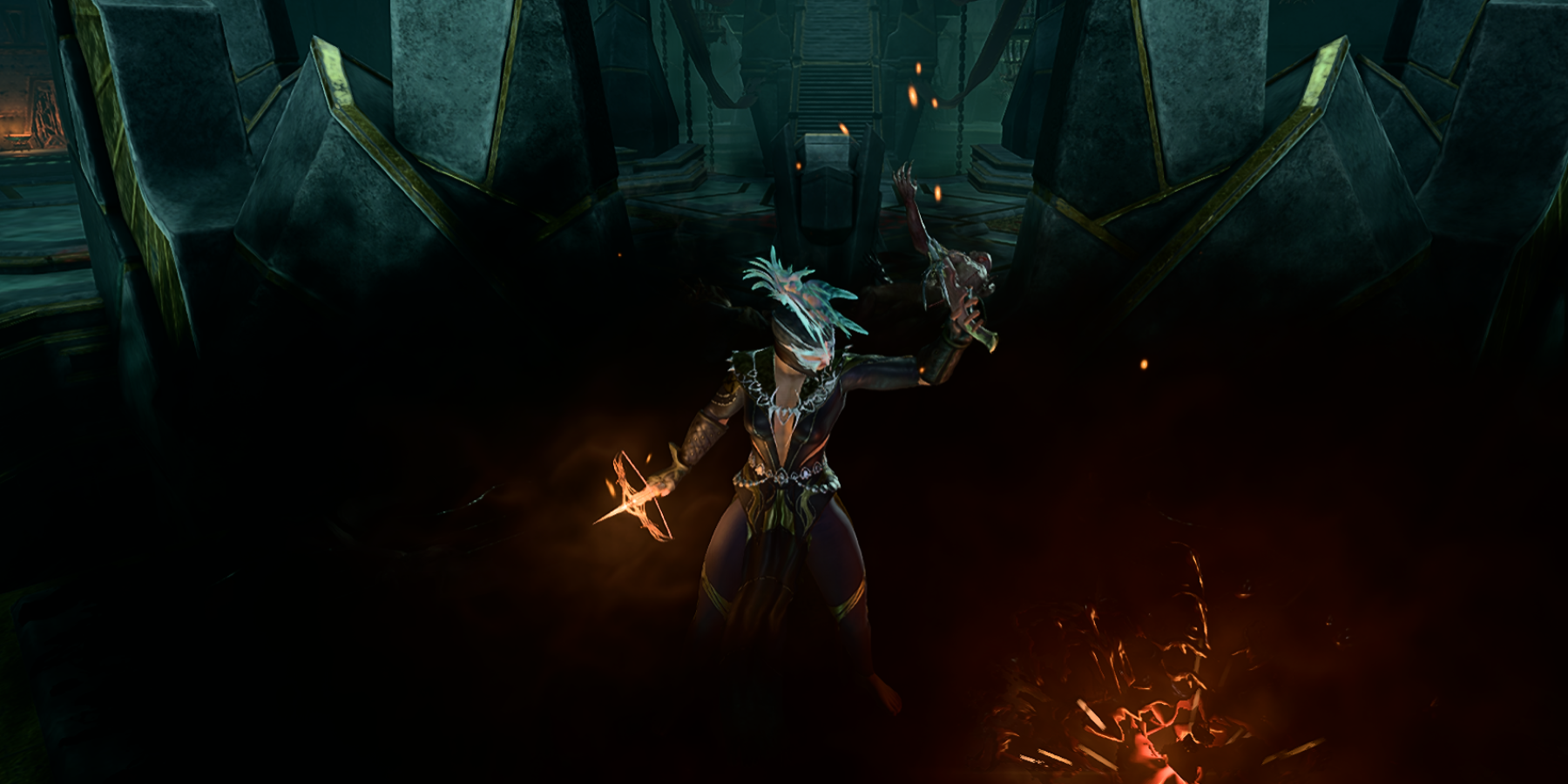
Baldur's Gate 3: Best Rogue Multiclass Build
The Rogue is a great class for others to dip into in Baldur's Gate 3, but that doesn't mean it can't take the lead role when multiclassing.Granted, Rogues can already deal a lot of damage via Backlash, courtesy of the Backstab mechanic. However, when done via Sneaking, Rogues can position themselves in the best place possible before making the attack. This allows Rogues to go toe-to-toe with their target while bypassing Initiative.
15 Become A Scouting Asset
Sneak To Get An Advanced View Of The Battlefield
|
Procedure |
Use the Rogue’s high Sneak to survey the battlefield |
|---|---|
|
Effect |
This lets players find better vantage points for long-ranged attackers, as well as entryways for tanks and other melee DPS |
Again thanks to Sneaking, Rogues can become one of the most efficient scouts in the game. With this mechanic, Rogues can survey distant battlefields without arousing suspicion. This allows them to help players get a better view of the map and position the rest of the team before initiating fights.
Thanks to their high Finesse Rogues also move the furthest in any given turn. In combat, this means they can reach the most distant enemies the fastest. However, in the context of scouting, high move speed also helps them quickly exit unexpected encounters.
14 Tank Damage Through Dodging
Secure Survivability With High Dodging
|
Procedure |
Focus on raising Dodging per points through Leadership (+2%), Dual Wielding (+1%), as well as getting bonuses via the Parry Master Talent (+10% when Dual Wielding), and being a Dwarf (+5%) |
|---|---|
|
Effect |
High-enough Dodging can ensure Rogues don’t get hit even if they’re beside enemies all the time, leaving AOE to be their biggest threat |
It’s a common RPG trope for Rogues to be glass cannons in the same vein as Wizards. Whereas Wizards trade their health for high magic damage, Rogues often trade defense for incredibly high DPS. As such, Rogues often rely on playstyles that focus on hit-and-run tactics. Some players can expertly bypass these disadvantages by giving Rogues ridiculously high dodge stats, letting the strongest attacks just pass through them.
In Original Sin 2, players can also do the same trick. With a high-enough Dodging Attribute, a Rogue can bypass almost any attack. In this regard, players can have Rogues act as substitute tanks to distract bosses as allies try to get their attacks in.
13 Dominate In Early-Game With Skills
Get Staple Rogue Skills For Maximum Early-Game Performance
|
Procedure |
Backlash (Scoundrel 1), Cloak and Dagger (Scoundrel 2), Gag Order (Scoundrel 2), and Chloroform (Scoundrel 1) are always reliable Rogue Skills |
|---|---|
|
Effect |
Rogues can get a standard rotation of combat and utility with Backstab-compatible Backlash (Scoundrel 1), Sneaking mobility with Cloak and Dagger (Scoundrel 2), anti-spells with Gag Order (Scoundrel 2), and standard stunning with Chloroform (Scoundrel 1) |
Players building a Rogue build are expected to rely on Scoundrel Skills to maximize their potential. In this regard, players may want to focus on certain early-game Skills to help their characters maximize their Rogue potential as soon as possible.
One essential Skill to acquire is Backlash (Scoundrel 1), as this facilitates high-powered sneak attacks. Afterward, players should acquire Cloak And Dagger (Scoundrel 2), as this allows them to jump in various battlefield spaces without breaking Sneaking.
Secondary early-game Skills depend on a player’s focus. Gag Order (Scoundrel 2) is a mean silencer against Spellcasters. Meanwhile, Chloroform (Scoundrel 1) remains a quick destabilizer for Skill-reliant foes.
12 Obliterate Foes In The Late-Game
Invest In Leveling Scoundrel For High-Damage Endgame Skills
|
Procedure |
Try as often as possible to raise Scoundrel School with Points, giving them access to powerful Skills like Mortal Blow (Scoundrel 5) and Fan of Knives (Scoundrel 3) |
|---|---|
|
Effect |
High-level Skills can help the Rogue become a force to reckon with, such as spending Source on the insta-killing Mortal Blow (Scoundrel 5), as well as the Backstab-compatible AOE-ing Fan of Knives (Scoundrel 3) |
As Rogues grow in strength, they should focus on some high-powered Skills to get in their kills as fast as possible. Thankfully, Scoundrel has very deadly late-game Skills that players need to pay attention to. Unfortunately, the most powerful Scoundrel Skills do require Source. As such, players need to be wary whenever they feel like they have to use these Skills.
At its core, Mortal Blow (Scoundrel 5) stands as the most powerful Scoundrel Skill, being able to insta-kill enemies below 20-percent Vitality. It does have an additional cost of 3 Source, which means players should reserve this for stronger bosses.

Baldur's Gate 3: Best Feats For Sorcerers, Ranked
From Actor to Magic Initiate, there are a bounty of solid feats to choose from for Sorcerers in Baldur's Gate 3.Meanwhile, players should also pay attention to Fan of Knives, a surrounding AOE attack, which can deal 125-percent Physical Damage. Since it can backstab, Fan of Knives can essentially dispatch multiple foes at once. This does have an additional cost of 1 Source.
11 The Rogue Remains A Safe Choice
Get Standard Stealth DPS
|
Procedure |
Get the Rogue Preset Class to get the Pawn (Talent) and Skills such as Adrenaline (Scoundrel 1) and Throwing Knife (Scoundrel 1) |
|---|---|
|
Effect |
Straightforward DPS gives Rogues ensures the Pawn gives them +1AP Movement every turn, Adrenaline (Scoundrel 1) gives +2AP this turn in exchange of -2AP on the next turn, while Backstab-compatible Throwing Knife (Scoundrel 1) and Backlash (Scoundrel 1) ensure Sneak Attack |
Players who want to perfect a Rogue build should pick a Starting Class as a template to mold into their ideal stealth fighter. In that regard, the Rogue remains a safe choice. They start with The Pawn Talent, which gives the Rogue 1AP Free Movement every turn. This is great for mobility, especially for "that stretch" to reach a faraway opponent.
The Rogue's starting Skills also work well with an early DPS build. Adrenaline (Scoundrel 1) gives the Rogue a 2AP boost at the cost of -2AP beginning the next turn. This perk works with quick combos courtesy of other Skills like the long-range Throwing Knife (Scoundrel 1) and signature Backlash (Scoundrel 1), which grants them a 100% chance to Backstab for lethal damage.
10 The Shadowblade Adds Versatility
Get Extra Utility Alongside Sneak Options
|
Procedure |
Get the Shadowblade Preset Class to get Guerilla (Talent) and Skills like Chameleon Cloak and Chicken Claw |
|---|---|
|
Effect |
The lack of straightforward DPS is compensated by the Shadowblade being more of a support role, with Chameleon Cloak providing Invisibility, Guerilla giving +40% Sneak Attack Damage, while Chicken Claw transforms enemies into chicken to stop their combat performance |
Of the 14 available Starting Classes in Character Creation, the Shadowblade adds an element of early-game versatility for players. The Shadowblade begins with the Guerilla Talent, which increases Sneak Attack damage by a whopping 40-percent. This works well with the Shadowblade's preset Skills, which include Chameleon Cloak (Polymorph) that sets Invisibility.
Additionally, the preset Backlash Skill instantly paves the way for Shadowblades to get a stealth build. To add versatility to the Class, it also comes with Chicken Claw (Polymorph) which allows the caster to transform an enemy into a chicken provided it doesn't have any Physical Armour left.
9 Finesse Can Maximize Base Damage
Prioritize Finesse For Higher Scoundrel Damage
|
Procedure |
Boost Finesse while adding Points to Scoundrel |
|---|---|
|
Effect |
Scoundrel scales with Finesse for damage. Players get +5% Damage per Point, allowing them to deal higher base damage |
Unlike other roles, the Rogue-type or stealth specialist in Original Sin 2 has to rely heavily on the Scoundrel School to maximize their potential. The thing is, Scoundrel is also a heavily specialized School with two requirements. First, Scoundrel depends on Finesse to scale damage. Secondly, Scoundrel needs Daggers to work, which by nature are also Finesse Weapons. In turn, it makes sense for Rogue-types to prioritize Finesse as an Attribute.
Thankfully, Finesse is extremely straightforward by nature. Essentially, each point in Finesse boosts damage output by 5-percent. As a plus, more Finesse also allows players to wield better Leather Armor. With high Finesse, Rogues can score higher base damage.
8 Consider The Right Attributes
Raise Points In Wits And Memory For Utility
|
Procedure |
Boost Wits (+1 Initiative and +1% Critical Chance per point above 10), and Memory (+1 Memory Slot per point above 10) as often as possible |
|---|---|
|
Effect |
The extra Initiative gives Rogues more chances to play early in combat, with the extra Memory Slot adding more room for Skills |
With Scoundrel being the best equivalent of a stealthy killer for Rogue-type characters, using a Dagger and scaling damage via Finesse seems like an immediate way to go. However, players of games like Divinity: Original Sin 2 know that there’s more to an RPG character than just a single Attribute focus. When building a Rogue-type character, players need to consider how other Attributes work with their specific build.

Baldur's Gate 3: 10 Biggest Shortcomings Of Act 3
Baldur's Gate 3 is certainly an impeccable and rewarding RPG; however, Act 3 of the game raises some concerns with its big shortcomings.For instance, Rogues could work with higher Wits as maintaining this stat above 10 will give +1 Initiative and +1% Critical Chance, allowing the character to deal more damage. Likewise, every point in Memory above 10 will give an extra Memory Slot, allowing Rogues to memorize more Skills to use for the team.
7 Dual Wielding Will Work Wonders
Use Dual Wielding Ability Instead Of One-Handed Ability
|
Procedure |
Prioritize Dual Wielding’s +5% Damage and +1% Dodge per Point versus one-Handed’s +5% Damage and +5% Accuracy boost per Point |
|---|---|
|
Effect |
Since Dual Wielding lets players attack with both weapons, it can net much higher base damage than just attacking with one armament |
Considering how Scoundrel Skills rely on Daggers, it makes sense for Rogue-types to maximize their damage output with the same weapon type. However, given that Rogue-types prefer to finish fights faster than enemies react, they may benefit more from using two Daggers with the Dual Wielding Ability than a Dagger-Shield combo with the Single-Handed Ability.
Granted, it's tempting that each point in One-Handed offers a 5-percent Damage and Accuracy boost. However, the Dual Wielding's 5-percent Damage does come with two hits in a single attack, therefore maximizing Scoundrel's Backstab damage. Its 1-percent Dodge boost per point also helps Rogues dodge otherwise fatal strikes.
Of course, players need to remember that the off-hand weapon will always have a 50-percent damage penalty. It's still one attack more than what the Single-Handed offers, though!
6 Scoundrel By Nature Is Brutal
Abuse Scoundrel Upgrades
|
Procedure |
Put Points into Scoundrel as often as possible |
|---|---|
|
Effect |
Each Point in Scoundrel gives +0.3 Movement Speed, +5% Critical Multiplier, allowing players to abuse DPS via crits |
Players who analyze the Scoundrel School can find it too technical to master. However, its benefits at its core can make Rogue-types potentially the most insane damage dealers in combat. Each point in Scoundrel alone not only gives a 0.3 Movement Speed boost but also adds 5-percent to Critical Multiplier. Meaning, Critical Strikes get an inherent damage boost thanks to Scoundrel alone.
Essentially, this means players who find a way to deal as much critical damage as possible can tear through enemies with a few APs worth of attacks. To add to Scoundrel's brutality, its 1AP Backlash Skill is an instant Backstab (a guaranteed critical hit) and is accessible with just one Scoundrel level.
5 Mobility Guarantees Flexibility
Abuse Sneaking To Jump The Gun On Enemies
|
Procedure |
Use Sneaking and Skills that grant Sneaking and extra mobility as much as possible, such as Cloak and Dagger (teleport that doesn’t break Invisibility) |
|---|---|
|
Effect |
When used correctly, Sneaks can lead to devastating opening attacks that can cripple enemy defenses |
As mentioned, each point in Scoundrel boosts a Rogue's maximum movement - and players should always use this extra movement to maximize their battlefield placement. However, Scoundrel also offers extra mobility options to capitalize on their damage output: specifically, Invisibility and Sneaking.
In Original Sin 2, all players Sneak by "camouflaging" as their environment - reducing their movement but giving them the opportunity for Backstabs. Remember, for as long as enemies don't detect Sneaking or Invisibility, a Rogue can stay out of a fight - perfect for finding the best position to strike and enter combat.
However, aside from Sneaking, Rogues can tap into Invisibility to punish their opponents. Rogues that have access to Invisibility (via Chameleon Cloak, for instance) can use most Scoundrel Skills without breaking the stance. Additionally, Cloak and Dagger (Scoundrel 2) is a 1AP teleport that won't break Invisibility or Sneaking - perfect for targeting powerful bosses.
4 Maximize Debuffs For Setups
Use Scoundrel Debuffs To Give Enemies A Disadvantage
|
Procedure |
Learn Skills that give debuffs, such as Chloroform (for Sleeping), Gag Order (Silence and destroys Magic Armour), and Sleeping Arms (Silence and disables attacks) |
|---|---|
|
Effect |
Scoundrel School’s extra debuffs can help the Rogue set up attacks from other party members |
In regular MMOs, Rogues usually end up maxing DPS to eliminate enemies as soon as possible. However, Original Sin 2 gives Rogues more freedom to maximize their tactical potential on the battlefield making them just as efficient as spellcasters. Their debuffs come in the form of Atrophy, Sleeping, and Silence across three Skills. Despite the limited number of Skills, they can spell trouble for powerful bosses and enemies in general.
For instance, Chloroform (Scoundrel 1) sets Sleeping to a target, giving the party a full turn's worth of movement for a setup or a devastating attack. Likewise, Gag Order (Scoundrel 2) not only destroys Magic Armour but also sets Silenced, disabling casting Skills. Lastly, Sleeping Arms (Scoundrel 2) sets Atrophy, which not only grants Silenced but also disables attacks entirely.


